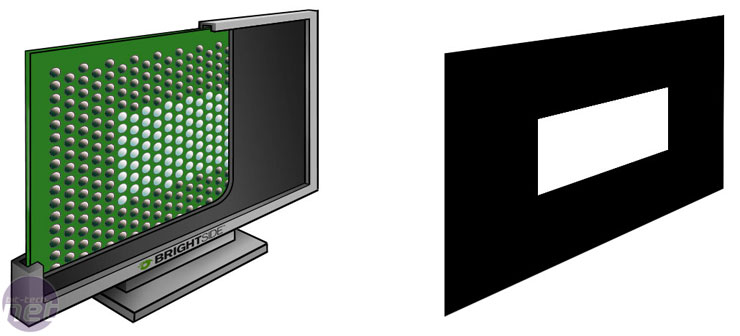Colour me this
What happens when you take a picture in a fluorescent-lit office environment? It comes out green. And why is that? Because fluorescent bulbs don't actually produce white light - instead, they're greenish blue. Incandescent bulbs do the same thing, but more yellow - the only true "white" light is sunlight, though halogens and LEDs can produce a pretty close second - their light is actually slightly blue, but the eye is less sensitive to that than other colours.So why, then, do we not see everything tinted in green and yellow? Well, our minds have a built in "white balance," just like your favourite digital camera. We see things that should be white, and our mind makes them white. The filter is applied to everything within viewing distance, just like if you put a colour filter over a picture.
The problem is, the same green fluorescents are what's in our monitors - and unfortunately, there's not a "white balance" in a polarising filter. That means that more greens come through than other colours when a pixel is trying to make white, leaving a slightly greenish hue. This distorts the colour space on your monitor greatly - sure, the panel can produce all of the colours of sRGB, but the backlight to the panel makes some of them impossible to render.

It goes farther than that - because the lights produce so much more green than red or blue and light bleed is so prevalent that other colours become less vibrant, and reds can take on a brown tint on lower brightness monitors. On top of that, fluorescents take up space as tubes, creating dead spots where the tubes are shining onto the filter from an angle. You may not see them that easily in a brighter light environment; but they're there, creating uneven lighting and dim spots on your picture.
So why do we use them? Well, cost and tech specs, mainly. See, fluorescent bulbs are cheap, extremely low energy and low heat producing. High-quality fluorescents have coatings to try and bring down the green a bit, creating a whiter light, but even that isn't enough to solve the issue. We could try halogens, but they're so bright and hot that they would likely melt the screen while making even the best contrast ratio practically worthless. Incandescents share the same problem, except that they're not even low energy and would just cast a different hue.
There is one solution, though - LED backlighting. White LEDs run cool to the touch, use very little electricity, and have incredibly high brightness. When you pack enough into an array, they produce a stunningly white light that can rival even the brightest compact fluorescent array. If you remember Geoff's look into Brightside displays (Brightside was acquired by Dolby earlier this year), you'll see what we mean - these displays have an incredible brightness because they have almost one LED for a small number of pixels, generating 4000cd/m² at white, and a flat zero for black. Granted, most things don't need quite that level of brightness - HDR isn't simulated on that display, it's properly created by making things that bright in contrast to their surroundings.
More importantly, LEDs produce a nearly perfect white light. By using them as a backlighting source on a TFT-LCD, you can have a much more even, white light that will properly represent the colour space which you've chosen. The almost non-existent heat output and incredibly low power draw makes them a great choice for laptops and desktops alike. As the technology becomes cheaper to implement, monitors will improve in colour quality greatly - without ever having to step up in terms of depth. It's making much better use of the colours you already have at your disposal.

MSI MPG Velox 100R Chassis Review
October 14 2021 | 15:04









Want to comment? Please log in.